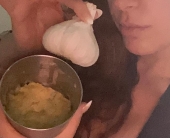
 1
1










































Ajila Ama Farm Western North Carolina
www.facebook.com/ajilaama






 1
1




























 2
2




Twisted Tree Farm and Nursery
www.twisted-tree.net














 2
2




Permaculture nursery - http://www.edibleacres.org
Permaculture Youtube - http://youtube.com/user/edibleacres
 2
2






















“Let food be thy medicine and medicine be thy food.” - Hippocrates











“Enough is as good as a feast"
-Mary Poppins




 3
3




seeking mutualism, discovering trees












|
Replace the word "snake" with "danger noodle" in all tiny ads.
Learn Permaculture through a little hard work
https://wheaton-labs.com/bootcamp
|





